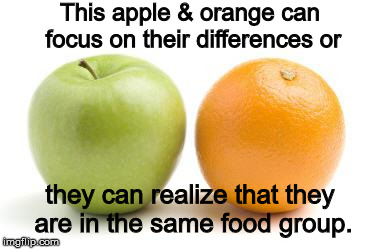By K. Tran

Can EV cars and solar roof tiles save Mother Earth? Can spaceships and planetary colonization save humanity? If so, can Elon Musk, the CEO of Tesla and SpaceX, be our leader to save humankind?

People who sacrifice themselves to benefit society is, in my own terms, a hero. Also, a hero is both a direct and indirect leader who does morally good and intellectually competent actions that are portrayed by the media as astronomical benevolent deeds. I will argue that Musk is a hero because his life is spent upholding his moral agenda in preserving human life in the next millennia with clean energy initiatives and space colonization missions. This is important because Musk is thinking about the long-run for humanity, refusing to believe our civilization will someday die out.

Musk demonstrates his heroic plans in preserving humanity by running his own companies like Tesla. Tesla is a company that produces electric vehicles (EVs), solar panel roof tiles, and other clean energy alternatives for consumers. Musk believes that by using more green energy, as opposed to consuming more fossil fuels, the carbon dioxide levels can stop increasing so dramatically in order to prevent the further exacerbation of global warming. Global warming is a concern because it negatively affects the environment, such as an increasing number of natural disasters (NASA). This is concerning because if there are more environmental threats, then many lives will be lost. Musk is trying to delay or hopefully reduce the potential of this issue in causing human civilization to collapse for good. Also, Musk addresses earth’s eventual cyclical extinction level event, whether it’s from global warming or not.

Musk can preserve humanity from extinction-level events by giving people the opportunity to colonize other planets, increasing humanity’s likelihood of survival. Musk argues, “This is why we must preserve the light of consciousness by becoming a spacefaring civilization [and] extending life to other planets.” His rationale is that if we are on multiple planets, then there is a greater likelihood of survival because all planets are unlikely to encounter a doomsday event simultaneously. Are you amazed by such a moral viewpoint? Musk isn’t just funding his plans; he is also leading them. SpaceX has accomplished many space launches to this day, and Musk feels colonization is ready in the new few years. Yet skeptics believe our present day technology will not be capable of fulfilling such missions. Regardless, Musk’s compelling reasoning is enough to convince others, our future leaders, that this mission is necessary if not vital. It is no surprise that Musk with his background and otherworldly ideas make him the leader he is today.


Like a young boy excited to observe a spaceship take off from a NASA base in Houston, Musk reminisces on this emotion and memory to everyone through the media and his life’s work. Heroes surprise us with ideas and actions that seem superhuman, which inspire us to take an initiative to create a new and better world along with them. Whether it’s rescuing the world from self-destruction or building new life beyond our current parameters, Musk is remembered as a hero for encouraging everyone to reach for the stars through diligence to become a leader to save humanity.

References
Woodyard, C. (2013, April 17). Icons: Elon Musk doesn’t let up at Tesla, SpaceX. Retrieved from https://www.usatoday.com/story/money/business/2013/04/17/elon-musk-tesla-spacex-icon/2076641/
Levin, S. (2018, Jul. 16) Elon Musk calls British diver in Thai cave rescue ‘pedo’ in baseless attack. Retrieved from
https://www.theguardian.com/technology/2018/jul/15/elon-musk-british-diver-thai-cave-rescue-pedo-twitter
Clifford, C. (2018, August 02). Elon Musk defends plans to build a community on Mars after downbeat NASA report. Retrieved from https://www.cnbc.com/2018/08/02/elon-musk-defends-plans-to-build-community-on-mars-after-nasa-report.html
NASA. (n.d.). How Climate is Changing. Retrieved from https://climate.nasa.gov/effects/
Herron, J. (2018, Sept. 27). Elon Musk’s Tesla holdings lose more than $1 billion in value after SEC charges. Retrieved from https://www.usatoday.com/story/money/2018/09/27/elon-musk-tesla-ceo-loses-more-than-1-billion/1448279002/
McGregor, J. (2018, Aug. 22). Elon Musk is the ‘poster boy’ of a culture that celebrates ‘obsessive overwork’. Retrieved from https://www.washingtonpost.com/business/2018/08/22/elon-musk-is-poster-boy-culture-that-celebrates-obsessive-overwork/?noredirect=on
Helmore, E. (2018, Aug. 19). Timeline: Elon Musk’s ‘difficult and painful’ 2018. Retrieved from https://www.theguardian.com/technology/2018/aug/19/elon-musk-tesla-timeline-difficult-painful-year
Snider, M. (2018, Oct. 11). A victory for Elon Musk: Tesla outsells Mercedes-Benz in US for first time ever. Retrieved from https://www.usatoday.com/story/money/nation-now/2018/10/11/tesla-outsells-mercedes-benz-elon-musk/1598474002/
Mosher, D. (2018, Dec. 15). Elon Musk beat a world record for rocket launches in 2018. Here’s every history-making SpaceX mission of the year. Retrieved from https://www.businessinsider.com/spacex-falcon-9-commercial-rocket-record-most-launches-2018-12
McFarland, M. (2018, Dec. 18). Elon Musk’s first tunnel is finished. Here’s what it’s like to ride in it. Retrieved from https://www.cnn.com/2018/12/19/tech/boring-company-tunnel-elon-musk/index.html
The Tesla Team. (2018, Oct. 7). Model 3 achieves the lowest probability of injury of any vehicle ever tested by NHTSA. Retrieved from https://www.tesla.com/blog/model-3-lowest-probability-injury-any-vehicle-ever-tested-nhtsa
Clifford, C. (2018, June 26). Elon Musk: This is why we have to build civilizations in space. Retrieved from https://www.cnbc.com/2018/06/26/elon-musk-on-twitter-why-we-have-to-build-civilizations-in-space.html














